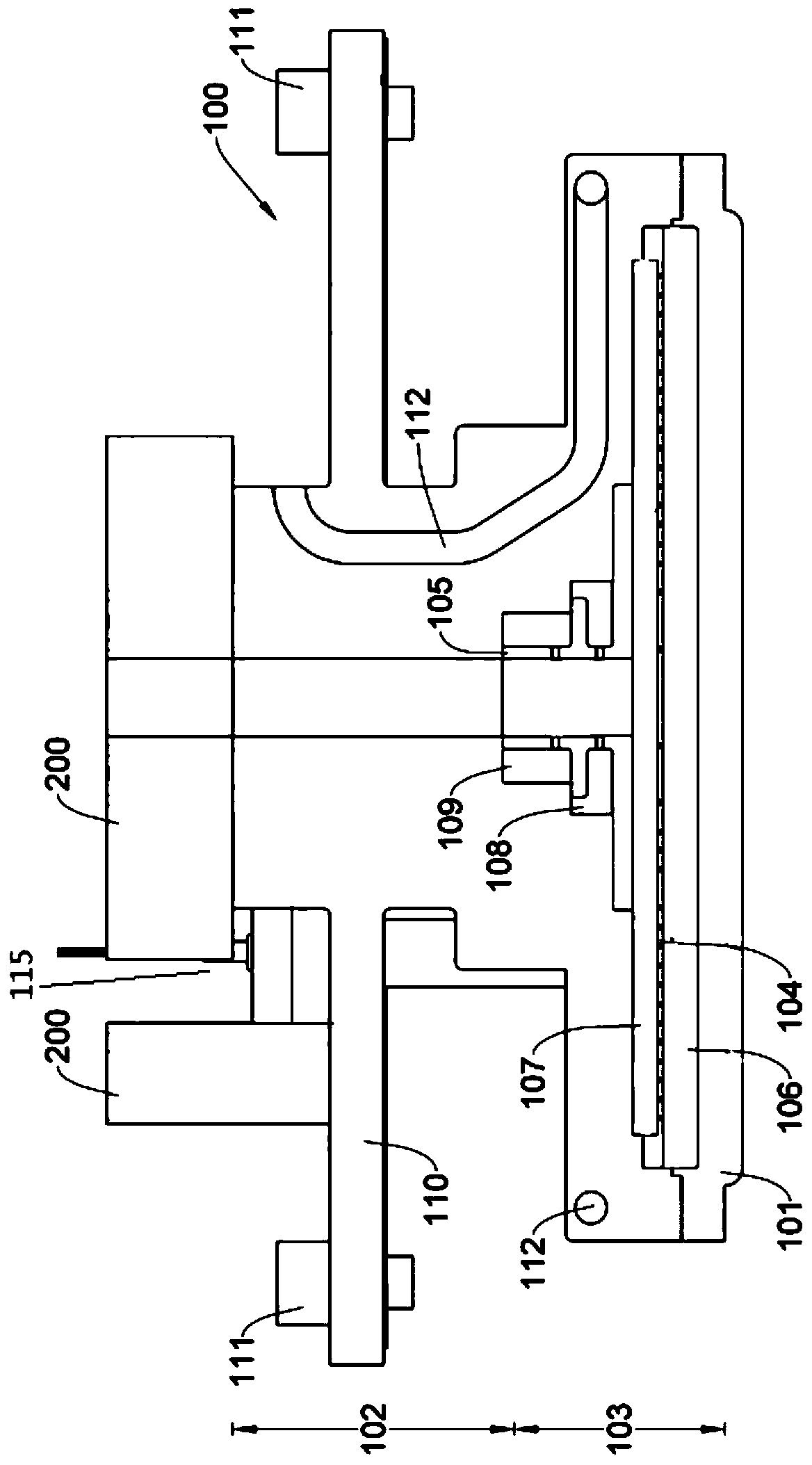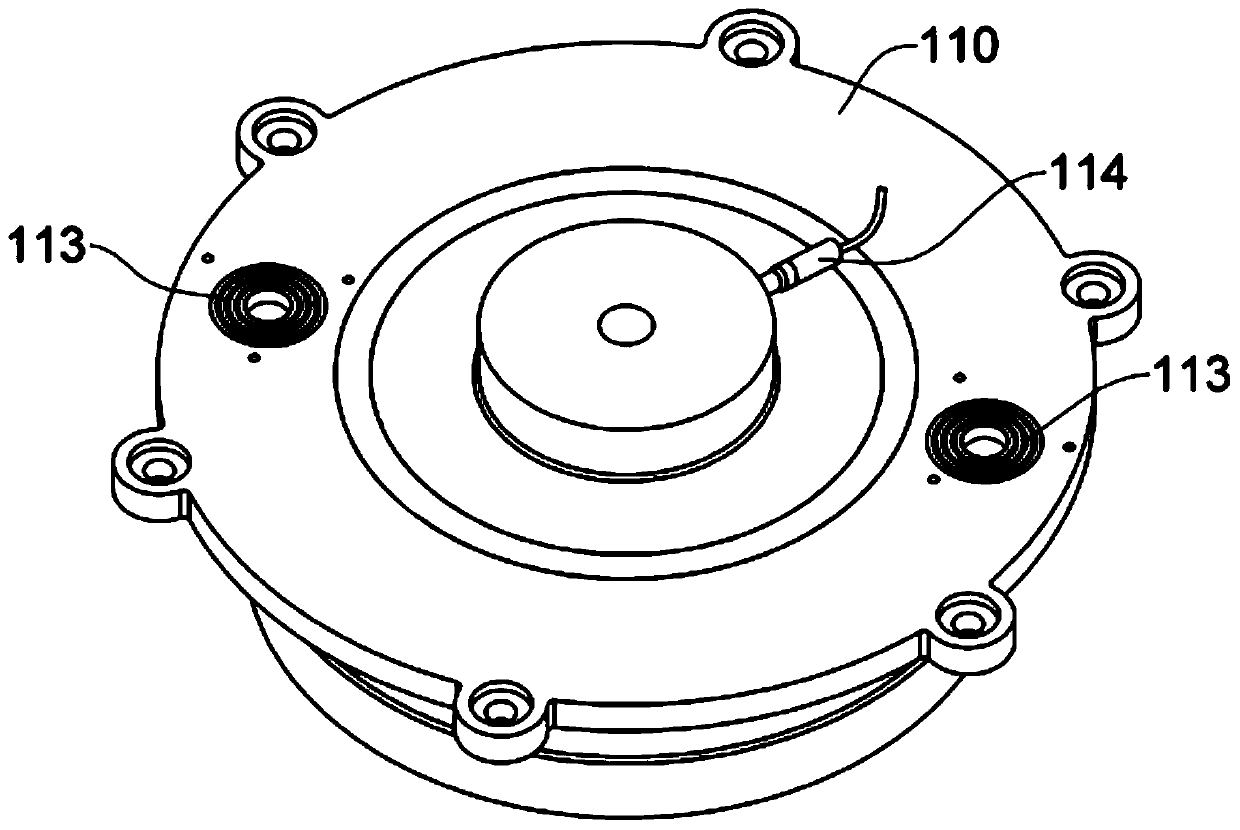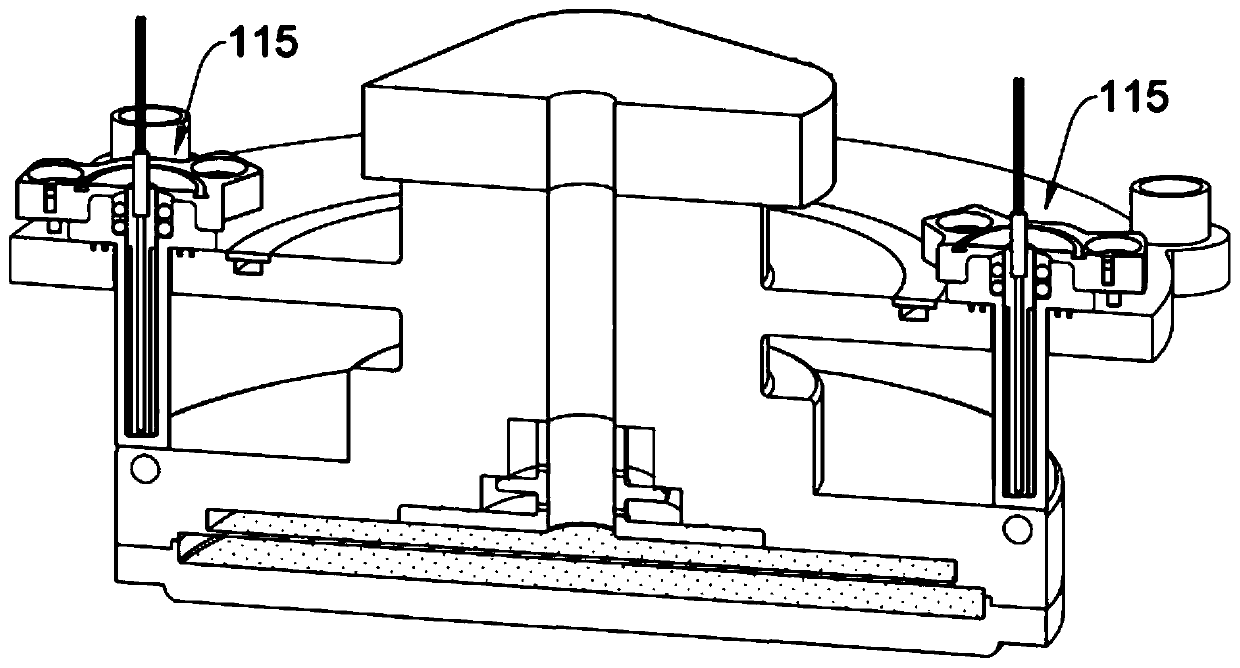Heating device and temperature controlled spray assembly
A technology for spraying components and temperature control, which is applied to parts of connecting devices, spraying devices, coupling devices, etc., and can solve problems such as increasing costs
- Summary
- Abstract
- Description
- Claims
- Application Information
AI Technical Summary
Problems solved by technology
Method used
Image
Examples
Embodiment Construction
[0021] In the following detailed description of a number of exemplary embodiments, reference is made to the accompanying drawings, which form a part hereof. It is shown by way of illustration by way of example by which the described embodiments can be practiced. Sufficient detail is provided to enable those skilled in the art to practice the described embodiments, but it is understood that other embodiments may be utilized, and other changes may be made, without departing from the spirit or scope thereof. Furthermore, while this may be true, references to "an embodiment" do not necessarily pertain to that same or singular embodiment. Therefore, the following detailed description is not intended to be limiting, and the scope of the described embodiments is defined only by the appended claims.
[0022] In the entire specification and scope of the claims, unless the context clearly states otherwise, the following terms have the meanings clearly associated therewith. As used her...
PUM
 Login to View More
Login to View More Abstract
Description
Claims
Application Information
 Login to View More
Login to View More - R&D
- Intellectual Property
- Life Sciences
- Materials
- Tech Scout
- Unparalleled Data Quality
- Higher Quality Content
- 60% Fewer Hallucinations
Browse by: Latest US Patents, China's latest patents, Technical Efficacy Thesaurus, Application Domain, Technology Topic, Popular Technical Reports.
© 2025 PatSnap. All rights reserved.Legal|Privacy policy|Modern Slavery Act Transparency Statement|Sitemap|About US| Contact US: help@patsnap.com



